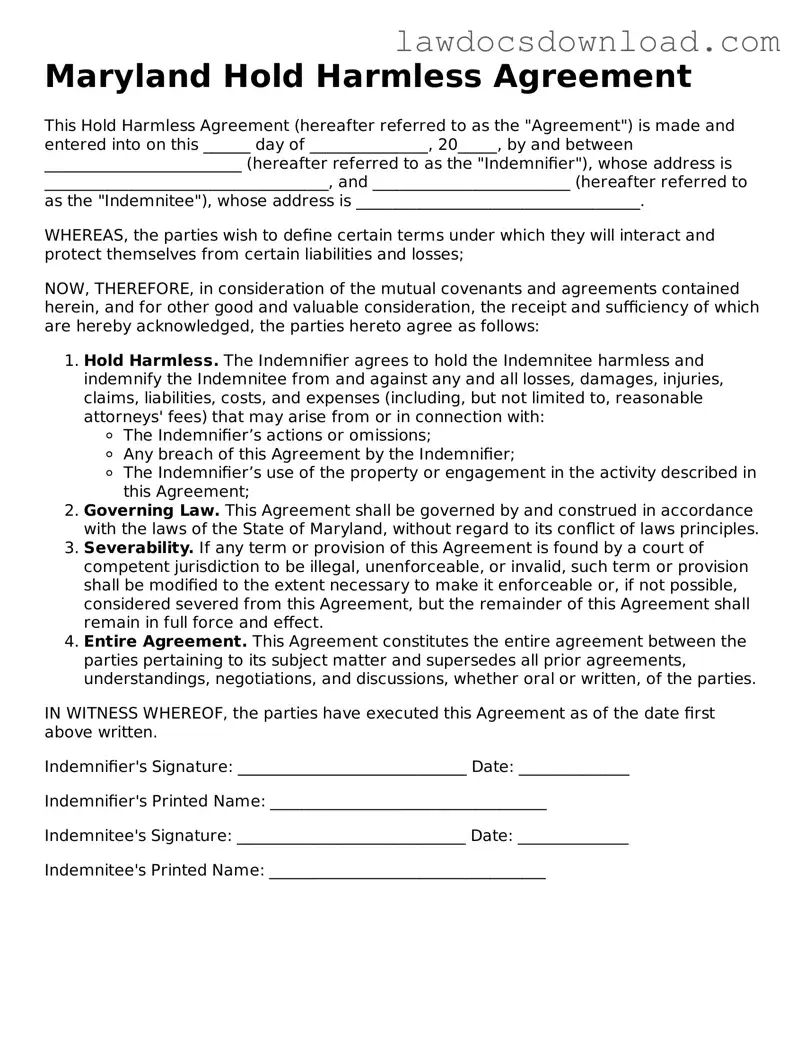Maryland Hold Harmless Agreement
This Hold Harmless Agreement (hereafter referred to as the "Agreement") is made and entered into on this ______ day of _______________, 20_____, by and between _________________________ (hereafter referred to as the "Indemnifier"), whose address is ____________________________________, and _________________________ (hereafter referred to as the "Indemnitee"), whose address is ____________________________________.
WHEREAS, the parties wish to define certain terms under which they will interact and protect themselves from certain liabilities and losses;
NOW, THEREFORE, in consideration of the mutual covenants and agreements contained herein, and for other good and valuable consideration, the receipt and sufficiency of which are hereby acknowledged, the parties hereto agree as follows:
- Hold Harmless. The Indemnifier agrees to hold the Indemnitee harmless and indemnify the Indemnitee from and against any and all losses, damages, injuries, claims, liabilities, costs, and expenses (including, but not limited to, reasonable attorneys' fees) that may arise from or in connection with:
- The Indemnifier’s actions or omissions;
- Any breach of this Agreement by the Indemnifier;
- The Indemnifier’s use of the property or engagement in the activity described in this Agreement;
- Governing Law. This Agreement shall be governed by and construed in accordance with the laws of the State of Maryland, without regard to its conflict of laws principles.
- Severability. If any term or provision of this Agreement is found by a court of competent jurisdiction to be illegal, unenforceable, or invalid, such term or provision shall be modified to the extent necessary to make it enforceable or, if not possible, considered severed from this Agreement, but the remainder of this Agreement shall remain in full force and effect.
- Entire Agreement. This Agreement constitutes the entire agreement between the parties pertaining to its subject matter and supersedes all prior agreements, understandings, negotiations, and discussions, whether oral or written, of the parties.
IN WITNESS WHEREOF, the parties have executed this Agreement as of the date first above written.
Indemnifier's Signature: _____________________________ Date: ______________
Indemnifier's Printed Name: ___________________________________
Indemnitee's Signature: _____________________________ Date: ______________
Indemnitee's Printed Name: ___________________________________
